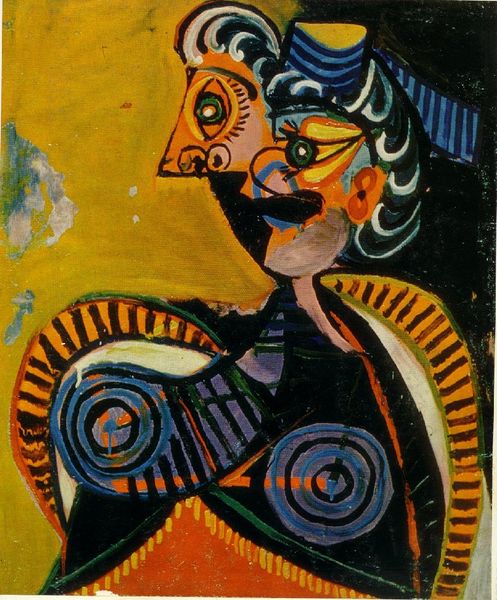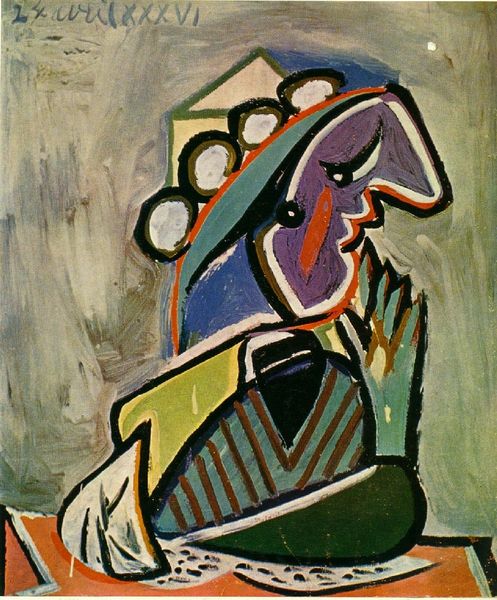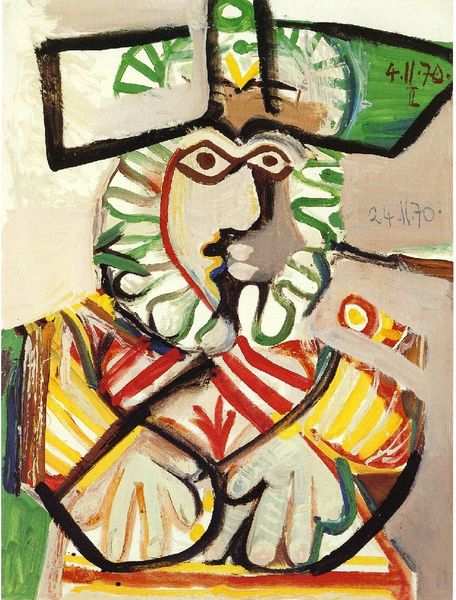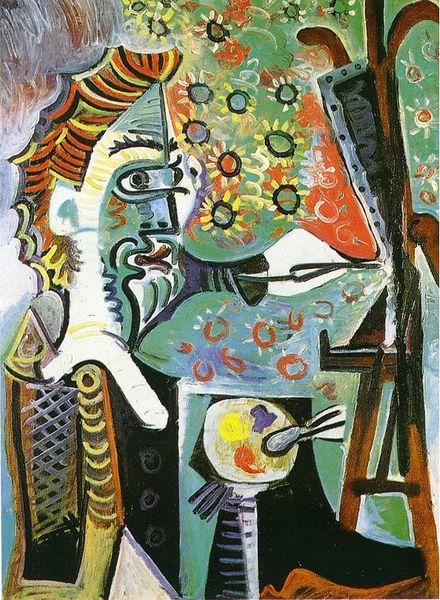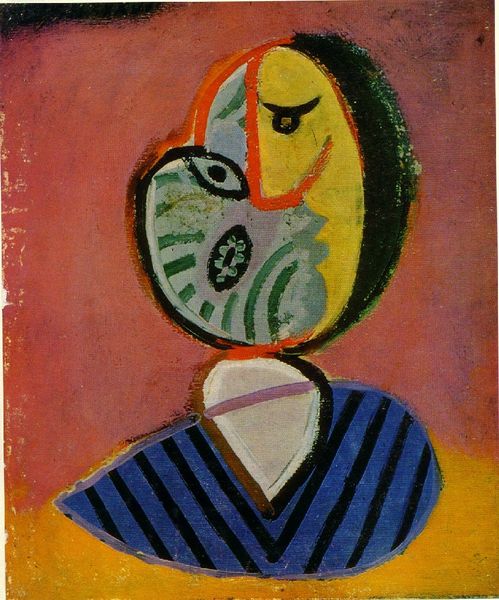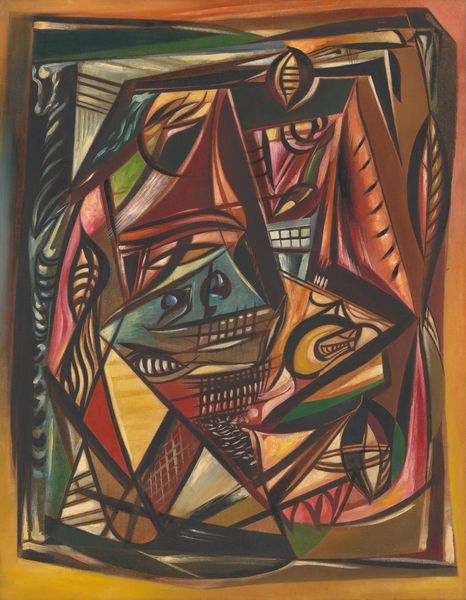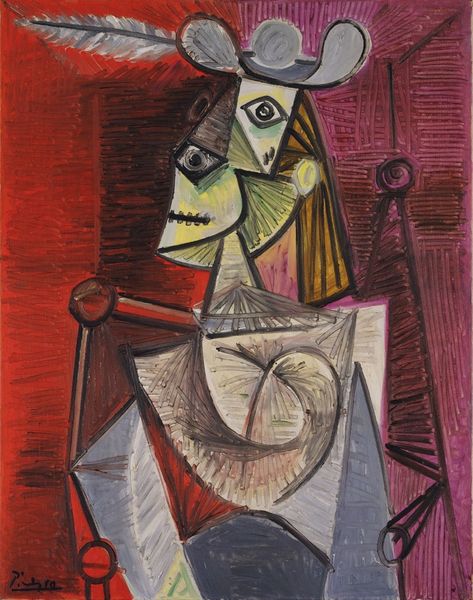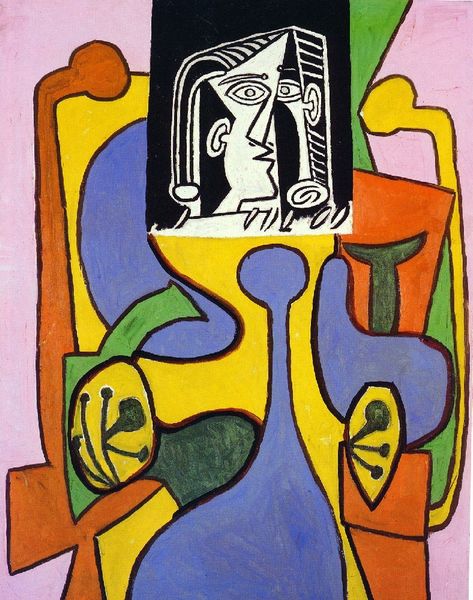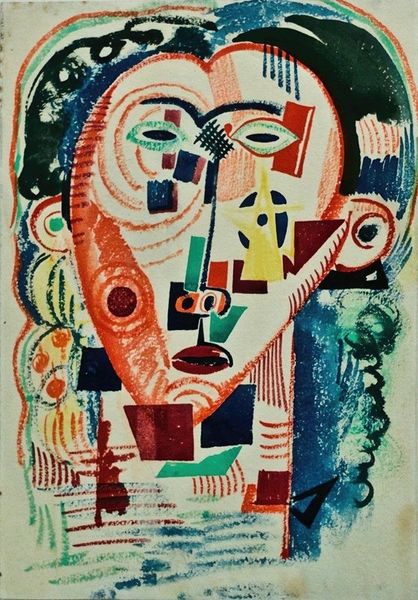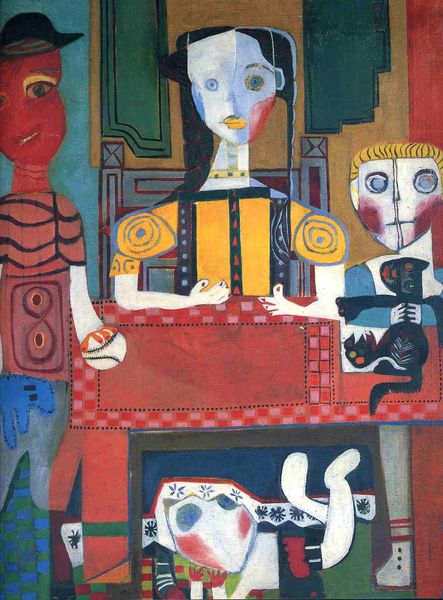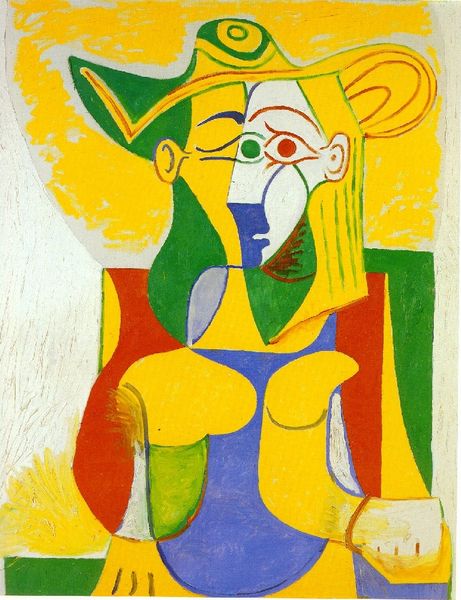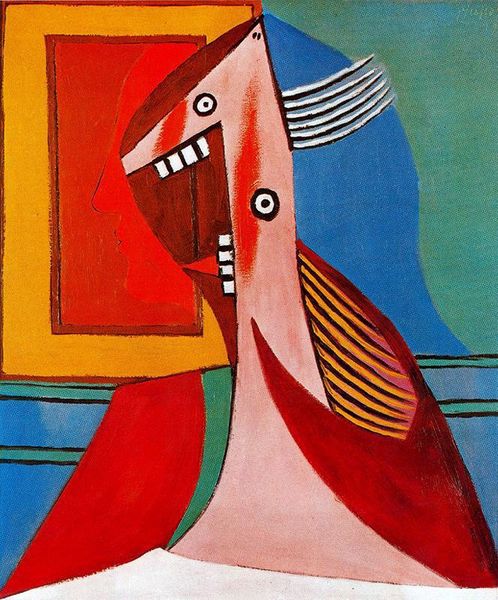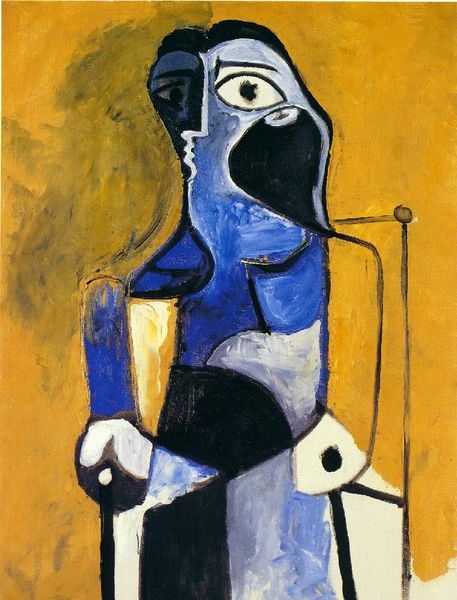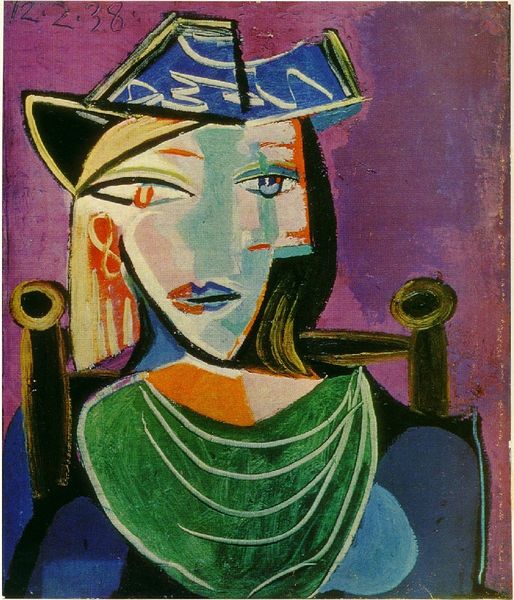
painting, oil-paint
#
portrait
#
cubism
#
painting
#
oil-paint
#
geometric
#
abstraction
#
surrealism
#
modernism
Dimensions: 81 x 60 cm
Copyright: Pablo Picasso,Fair Use
Curator: Here we have a painting by Pablo Picasso, made in 1937, titled simply "Untitled." Editor: The geometric fracturing creates a real tension. The color choices, while vibrant, amplify a somber mood, as if the figure is trapped or fragmented. Curator: Indeed, we see Picasso engaging in Cubist and Surrealist modes here, particularly in his fracturing of the subject. Look at how he presents multiple perspectives simultaneously. Editor: And what do you make of the motif of the eye? We see it represented in several forms—the dominant cyclopean form, and smaller embedded shapes. It reminds me of the all-seeing eye of ancient mythologies or a distorted form of the protective eye, reflecting anxieties about perception. Curator: Precisely. It's about more than just representing a face, but examining its very structure. There is a rejection of mimetic representation for a multi-faceted construction of visual language. Editor: The repeated triangular shapes also strike me as significant, echoing forms from primitive art, or even hazard symbols. They generate dynamism, a sense of precarious balance—a potent iconographic symbol in times of social unrest. Curator: Picasso utilizes oil paint masterfully to play with depth and flatness concurrently. He builds a pictorial space with very little distinction, and it makes our eye work harder to find coherence, thus reflecting our experience of living and seeing, perhaps. Editor: The painting provides insight into Picasso's intellectual preoccupations—and offers clues for a deeper understanding of 20th-century cultural anxieties through reimagined symbols. It also reveals how his deep exploration of formal structures informs his iconographic choices. Curator: Yes, it's through the formal relationships—line, plane, color—that we decipher the visual logic he establishes. The semiotic relationships established in this "Untitled" painting ask the viewer to look, not just see, a powerful example of what can occur in portraiture. Editor: I agree, this artwork serves as a haunting visual poem—about fragmented perspectives and enduring cultural symbolism, masterfully interwoven.
Comments
No comments
Be the first to comment and join the conversation on the ultimate creative platform.
